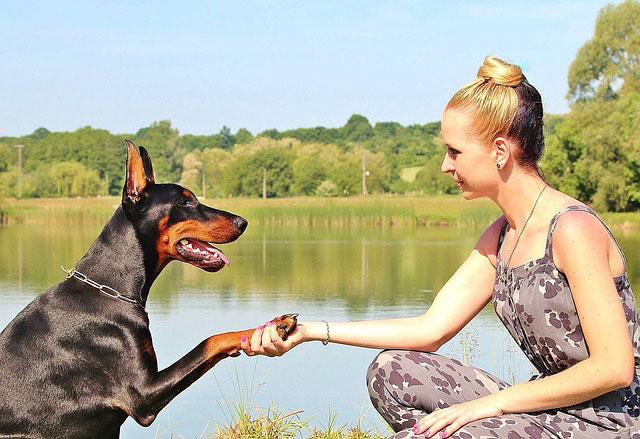Difference Between Classical and Operant Conditioning
Both classical conditioning and operant are central to behaviorism, but students often get confused about the differences between the two. Classical and operant conditioning are both types of learning that involve learning by association. However, there are important differences between the two. The main difference between classical conditioning and operant conditioning is that classical conditioning…

Both classical conditioning and operant are central to behaviorism, but students often get confused about the differences between the two. Classical and operant conditioning are both types of learning that involve learning by association. However, there are important differences between the two.
The main difference between classical conditioning and operant conditioning is that classical conditioning involves pairing a neutral stimulus with a reflexive response. In contrast, operant conditioning involves reinforcing or punishing voluntary behaviors to either increase or decrease their frequency.
Classical vs Operant Conditioning: Understanding the Differences
For many students, remembering what makes classical conditioning and operant conditioning different can be a real challenge. Fortunately, there are some handy tricks for remembering and identifying each type of conditioning process.
Classical conditioning:
- Involves involuntary behaviors that occur automatically
- Involves a neutral stimulus that naturally and automatically triggers a response
- Involves placing a previously neutral stimulus before a naturally occurring reflex
Operant conditioning:
- Involves voluntary behaviors
- Requires the use of reinforcement or punishment
- Involves placing a consequence after a behavior
What Is Classical Conditioning?
Classical conditioning is a learning process in which an association is formed between a naturally existing and neutral stimulus. Once an association has been formed, the neutral stimulus will come to evoke the same response as the naturally occurring stimulus.
Sounds confusing, but let’s break it down:
- A dog will salivate when it sees food. The food is a naturally occurring stimulus that automatically triggers a response.
- Now imagine that you begin to wear a white coat every time you present the food to the dog.
- Eventually, the animal forms an association between the natural stimulus (the food) and the previously neutral stimulus (the white coat).
- Once this association has been established, the dog will begin to salivate when it sees the white coat, even in the absence of the food.
This process was discovered by a Russian physiologist named Ivan Pavlov and has become a vital concept within the field of behavioral psychology. The classical conditioning process often occurs in the real world, and can also be used to purposefully alter behaviors and teach new behaviors.
How Does Classical Conditioning Work?
Ivan Pavlov was a Russian physiologist, but his most famous discovery had a significant effect on the field of psychology. If Pavlov’s name rings a bell, then you have probably heard of his famous experiments with dogs. Pavlov experimented on 40 dogs during the course of his experiments.
Pavlov was conducting experiments on the digestive systems of dogs when he noticed something interesting. Whenever a lab assistant would enter the room, the animals would begin to salivate.
Pavlov’s digestive experiments involved introducing both food and non-food items to the animals and then measuring the salivary response. Why were the animals salivating whenever they saw the lab assistant?
Pavlov quickly realized that salivating had actually become a learned response. The animals had grown to associate the sight of the assistant’s white lab coat with the presentation of food. Eventually, simply the sight of the assistant could trigger this response, even in the absence of food.
Pavlov’s discovery became known as classical conditioning. In this process, a previously neutral stimulus is paired with an unconditioned stimulus or something that naturally and automatically triggers a response. In Pavlov’s experiments, he paired the sound of a bell with the presentation of food.
After several pairings, an association is formed and the neutral stimulus will also trigger the response. At this point, the neutral stimulus is known as the conditioned stimulus and the response becomes known as the conditioned response. In Pavlov’s experiments, the sound of the bell eventually began to provoke the drooling response, even when no food was present.
The Influence of Classical Conditioning
The discovery of classical conditioning had an enormous impact on the school of thought known as behaviorism. Advocates of behaviorism included the psychologist John B. Watson, who utilized classical conditioning in an experiment to demonstrate how fear could be a conditioned response.
The behaviorist John B. Watson also utilized this process in his famous Little Albert experiment. In the experiment, a child known as Little Albert was exposed to a white lab rat. The child initially showed no fear of the animal, but Watson and his assistant Rosalie Rayner then paired the presentation of the rat with a loud clanging sound.
After several pairings, the child eventually began to cry whenever he saw the white rat. By associating the sight of a white rat with a loud, clanging sound, Watson was able to classically condition a young boy to fear the white rat. Little Albert’s fear even bled over to other white, furry objects including stuffed toys, Rayner’s white fur coat, and the sight of Watson wearing a Santa Claus beard.
What Is Operant Conditioning?
Another psychologist named B.F. Skinner realized that while classical conditioning was powerful, it could not account for all types of learning. He suggested that intentional behaviors and the consequences that follow were also important.
Skinner described a process known as operant conditioning in which actions followed by reinforcement become more likely to occur again. If a child cleans her room and her parents give her a treat as a reward, she will become more likely to clean her room in the future.
Actions immediately followed by punishment will make the behavior less likely to occur. If you talk out of turn in class and the teacher reprimands you, chances are you will be less likely to speak out again without first raising your hand.
Operant conditioning is often used by parents, teachers, and behavioral therapists to help teach new behaviors and discourage undesirable ones.
A teacher, for example, might utilize praise and reward systems to encourage good classroom behavior, while also using punishments to minimize disruptive actions. Kids who behave appropriately might be awarded tokens, which they can then turn in to receive a reward. Those who disrupt class, on the other hand, might have to miss recess or some other desired activity.
Operant conditioning utilizes reinforcement and punishment to create associations between behaviors and the consequences for those behaviors.
For example, imagine that a parent punishes a child for throwing a toy. Because of this punishment, the child forms an association between the action (throwing) and a result (getting punished). As a result of this consequence, the child becomes less likely to throw the toy again in the future. Once this association is learned, the problematic behavior decreases.
There are a few different factors that can influence how quickly and how strongly a response is learned.
- The salience of the consequence can play a role, as well as the timing and frequency of the consequence.
- The timing and frequency of consequences in operant conditioning are known as schedules of reinforcement.
Key Terms and Definitions
The following are a few of the key terms that you should know and understand related to classical conditioning and operant conditioning:
- Conditioned Response
- Conditioned Stimulus
- Discrimination
- Extinction
- Fixed-Interval Schedule
- Fixed Ratio Schedule
- Habituation
- Negative Punishment
- Negative Reinforcement
- Positive Punishment
- Positive Reinforcement
- Stimulus Generalization
- Unconditioned Response
- Unconditioned Stimulus
- Variable-Interval Schedule
- Variable-Ratio Schedule
- Shaping
Classical vs. Operant Conditioning: Study Questions
As you study classical conditioning and operant conditioning, be sure that you are able to answer the following questions.
- What effect do schedules of reinforcement have on acquiring a new behavior?
- What are reinforcement and punishment? How do they differ?
- What are positive reinforcement and negative reinforcement?
- What are positive punishment and negative punishment?
- People often confuse punishment with negative reinforcement. How are they different?
- What are the differences between classical and operant conditioning?
Summary
Classical and operant conditioning can be powerful learning tools and have many real-world applications. Pavlov’s discovery may have occurred by accident, but it has influenced our understanding of how behaviors are learned.





